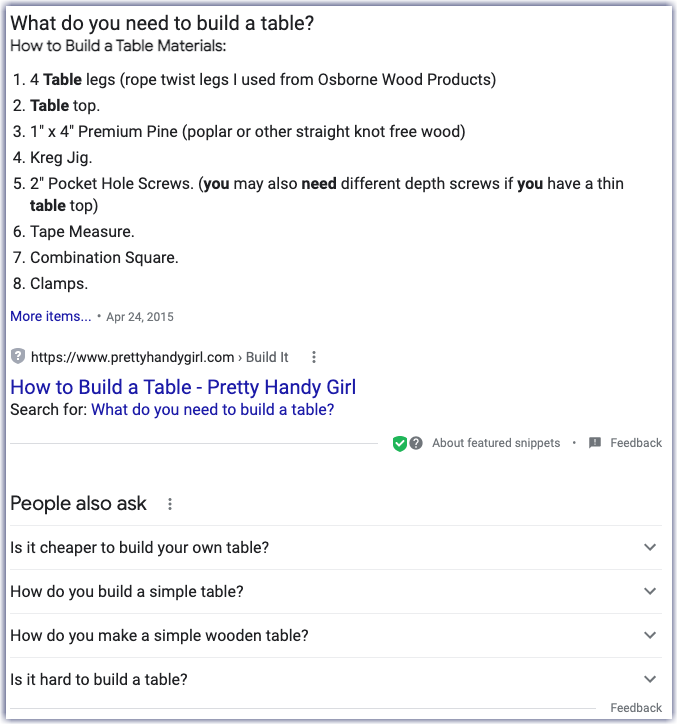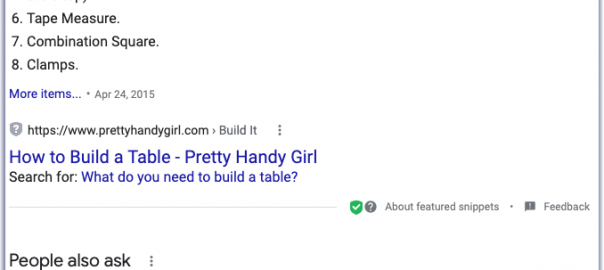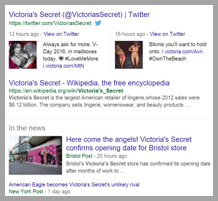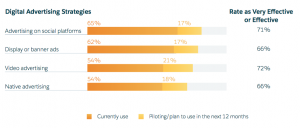Since about 2015, the “people also ask” (PAA) question box has steadily become more prominent in Google’s search results. It’s one of a few recent additions to shake up SEO in recent years.
The growing prevalence of “people also ask” results has left marketers wondering how they affect SEO and page ranking in search results. Are there particular circumstances that make PAA results pop up more than others? Is it worth optimizing for PAA questions? In this article, we will discuss that and more.
Table of Contents
- What exactly is the PAA box?
- Features of the PAA box
- So why does the PAA box matter?
- How to optimize for “people also ask” SEO
- Other benefits of PAA research
- Recap and takeaways
What exactly is the PAA box?
The PAA box is an interactive list of questions displayed in a Google search engine results page (SERP). Each question listed is related to the initial search and has a clickable dropdown arrow. The arrow opens a preview and link to the website Google believes best answers that question.
At first, the PAA box typically has three to four results. But clicking on questions will add new questions to the list. Depending on what you click, Google generates new related questions based on what it thinks you’re looking for. As far as anyone can tell, it does this infinitely and will generate new questions for as long as you keep clicking.
Google does this to get you to the result you want more quickly, without having to click through multiple pages and wait for them to load. The company has stated that it’s trying to become a “knowledge engine” and reduce the user’s time spent getting a result as much as possible.
Features of the PAA box
PAA results aren’t always going to look the same, nor will they always appear in the same position on the first page of Google results. While similar to featured snippets, the PAA box can appear in pretty much any search position, while snippets are always displayed first.
In a search for “how to build a table,” for example, it displays second in search results:

In a Google question search, the featured snippet (the best answer to your question) shows up at the top of the page and the PAA will fall farther down the page.
The answers won’t always be web pages, either. Results can range from blog posts to videos with content Google believes is relevant to your query. Google also appears to pull the answer from the same site every time for PAA questions.
For example, if Google uses your blog about beginner camera equipment to answer a PAA question like “what’s the best camera to buy on a budget,” it’s going to keep using your site to answer that question every time there’s a relevant search.
That’s great for SEO — as long as people actually interact with your page. It’s difficult to tell whether or not being featured in the PAA box boosts your search ranking. A study by Backlink.io found that only 3% of users interacted with the PAA box on average, though that number can climb to just over 13%.
Other interesting features of the PAA box:
- Searches for big brands like Amazon, Apple, and Walmart always trigger the PAA box
- 75% of PAA results appear within the top three results in Google
- Most PAA answers are paragraph blocks of text
- You can customize the answers you get by providing feedback via a small link at the bottom of the PAA box
- PAA questions can also trigger featured snippets, meaning it’s technically possible to get featured twice on the first page of Google search
- You can get the same PAA question and answer for multiple keywords
So why does the PAA box matter?
Despite limited interaction, data from Advanced Web Ranking shows “people also ask” has been growing steadily in use since January 2021. Even if you don’t show up in the PAA box, your SEO strategy can still benefit by gleaning user intent from the questions Google provides.
Being featured in the PAA box can also grant your site authority on a subject. If you create multiple forms of content (more on that later), the PAA box can showcase that by choosing, say, a YouTube video you made as an answer.
Google may also use your site as a source for multiple answers. And if it does, those answers could be displayed across a range of queries with high keyword search volume, meaning that even with a low interaction rate you can still pull in some decent traffic.
How to optimize for “people also ask” SEO
It might be tempting to choose a random PAA question from the box and try to optimize for it. However, if the question you choose has low search volume, that strategy will probably result in a lot of effort and not much of a payoff.
Optimizing for the questions with the highest search volume can prove to be a much better strategy. To help, Constant Contact’s Website Builder can show you keyword search volumes with its built-in SEO tools.
Google analytics should be able to show you keyword search volumes. And, Google Keyword Planner is another tool you can use to get this figure.
But search volume can only tell you so much. To make sure you’re pulling the best questions possible to optimize for, there are several things you can try to dig deeper:
1. Generate sample questions from sources outside Google
You can use any number of free tools that analyze keyword content, like Answer the Public or Keyword Generator, to find out what keywords are popular in your industry.
Start with a seed keyword like “bakery” or “photographer” and see what gets generated. For example, if you enter “bakery” into Answer the Public’s keyword tool, you’ll get results like:
- Where is bakery la mejor
- What bakery delivers near me
- Bakery who delivers
- Which bakery is halal
Answer the Public also breaks down your results alphabetically by keyword. Looking at these results, you can begin to map out common themes and see which keywords would make sense to optimize for.
If you make your website with Constant Contact’s website builder, you get access to a host of keyword tracking features. You can see which keywords rank high in Google to figure out whether to optimize for them, track specific keywords, and even compare data with competing websites.
AlsoAsked is another great tool for generating sample questions using a single keyword or phrase. The site gives you nine free searches per month and generates a web of questions similar to what you get from Answer the Public.
You can also invest in paid services like Ahrefs’ Keywords Explorer, which lets you glean keywords from a site URL and see the search engine results page (SERP) data — which includes PAA questions. They offer a limited free trial if you want to take it for a test run.
Use a few of these sites to generate sample questions, phrases, and keywords to get an idea of what you want to optimize for. Once you’ve got a group of them down, you can start to tailor the content of your page to those areas.
2. Create valuable content
The single most important thing you can do to increase your search ranking is create content that answers the user’s question.
Say that question is “how to get started in photography.” You’d want to create an authoritative piece of content that the user will be able to take action on by the time they’ve finished reading. You’d consider what content format would let you answer that question in an effective and engaging way.
The end result could look like anything, but maybe it’s a blog post with an accompanying video on the fundamentals of photography. You might include:
- What the best setup is for a beginning photographer
- A rundown of the exposure triangle
- Tips for different shooting modes
- Tips for finding people to shoot with
These are all things beginner photographers will need to know in order to improve in their craft. Answering them with a piece of content — or more likely a series, given the density of this subject — will make your site more authoritative. And that will make Google more likely to pull you as the answer for a question in the PAA box.
Don’t forget to tweak any existing content you have to improve its chances of being featured in the PAA box as well. See how past posts can be updated to better answer the question they were made for. It might even give you ideas for new content.
You want whatever content you create to directly address the question and definitively answer it. Since Google values speed and efficiency so highly in search results, doing so will make your page more likely to be featured.
3. “Scrape” PAA data with online tools
Some tools will generate a report for you with PAA data that you can download. Based on the keywords you choose, these tools create a list of PAA questions and organize the data into a handy spreadsheet. A few of these tools include:
All of these sites are pretty straightforward to use and offer how-to guides if you get lost. Most of the time it comes down to selecting your keywords, selecting the PAA option, and generating the report. Some of them even let you see PAA by device, so you can check if different questions come up on mobile versus desktop searches.
4. Look for the most common questions
Once you scrape the PAA data for the keywords relevant to your page and your industry, you can check what questions are being asked and spot patterns. If you see the same question paired with multiple keywords, it’s probably worth optimizing for it, especially if the associated keywords have a high search volume.
Depending on which tool you use to scrape PAA data for your keywords, you might have to tweak the report to display the data the way you want it. Reports from STAT don’t need much adjusting, but if you’re using Ahrefs’ Keyword Explorer you’ll need to create a pivot table with the data to get the most out of it.
5. Make sure you should be optimizing for the questions you pick
It’s important to check whether your page is already the answer to any of the PAA questions you want to optimize for. If Google is already linking to your site, it doesn’t make sense to expend extra effort. To do this, you’ll:
- Run the keywords through Google.
- Check to see if your page is a top search result.
Since you scraped the PAA data, you’ll know which keywords bring up which questions. Find the questions you want to optimize for, then enter their keywords in Google. After that, check the PAA box. If your site is already the answer, you don’t need to worry about optimizing for that PAA question.
If your page isn’t in the top 10 Google search results, chances are it won’t be chosen for an answer in the PAA box. That’s why you also need to check your site’s regular search ranking for the keywords you choose.
6. Tighten up your formatting and code
Trying to game the system by including answers to as many popular questions as possible won’t work. Instead, stick to optimizing your content for relevant keywords and answering a specific user query.
Once you’re ready to optimize, you can go through the following process for each PAA question:
- See if the answer to the question is on your page. If not, answer it.
- Format your content in a way that’s easy for Google to recognize.
- Clean up the HTML code for your page to make it easier for Google to categorize.
Formatting your content in a way Google can easily work with isn’t hard. Just make your URLs, title tags, and meta descriptions concise and readable. If appropriate, keyword-optimize them.
You can also use HTML coding labels to make it easy for Google to categorize your page. These labels — called schema markup — tell Google what your page is about.
The easier Google can see that information, the better your page will rank in search. Google has a tool called Structured Data Markup Helper that can walk you through the process of adding schemas to your page.
The most common types of PAA answers seem to be:
- Text
- Tables
- Lists
- Videos
To check what format Google expects for the answer to a PAA question, run it through Google and see what comes up. If you see a video displayed in the PAA box, you’ll know Google is likely to recommend videos as an answer to that question.
Not only will aligning your page content to what Google expects boost your search ranking, but it’ll also make your content easier for people to digest. If you aren’t already creating multiple forms of content, now’s the time to start.
Other benefits of PAA research
Researching for “people also ask” SEO can help your website in areas outside the PAA box. Correct formatting and editing will help your page climb regular search rankings, and possibly even earn a featured snippet spot.
Seeing the questions people ask around a certain keyword is a great way to get content ideas because they tell you what people want to know. If you see the same question asked repeatedly and know you have valuable information on it, you can create a stellar piece of content with the answer. Checking the PAA box for those keywords also lets you know what format of content Google is more likely to recommend (text, list, video, etc.).
Brands can also leverage the PAA box to give better answers related to their products. While branded searches aren’t particularly common, people looking for specific brands are usually getting ready to buy. If they find an answer from a non-brand source, it could put them off the purchase, so it’s worth it for brands to optimize for questions specific to them.
Recap and takeaways
The “people also ask” feature is a relatively new player in terms of SEO, but it could be worth optimizing for. Not only does a feature in the PAA box get you on the first page of Google, but it can also yield valuable clues about what people want.
Your research will provide the framework for optimization. Choosing keywords with high search volume that return relevant questions to your website and industry is important. Since multiple keywords can deliver the same PAA question, optimizing for the right questions can give you serious bang for your buck.
Even if you don’t show up in the PAA box, it’s still worth it to do the research. Seeing what questions people ask will give you ideas for new content that actually provides value, and could alert you to angles you didn’t know existed.
It isn’t exactly clear how the PAA box behaves, and as of yet a minimum of research exists on how it interacts with search. So test multiple methods, multiple questions, and take what works for you forward into the future.
You can find more tips on everything from SEO to building a business website on the Constant Contact blog. There are even free downloadable PDFs you can grab to read offline.
The post Optimizing for “People Also Ask” SEO appeared first on Constant Contact.
Digital & Social Articles on Business 2 Community
(56)





